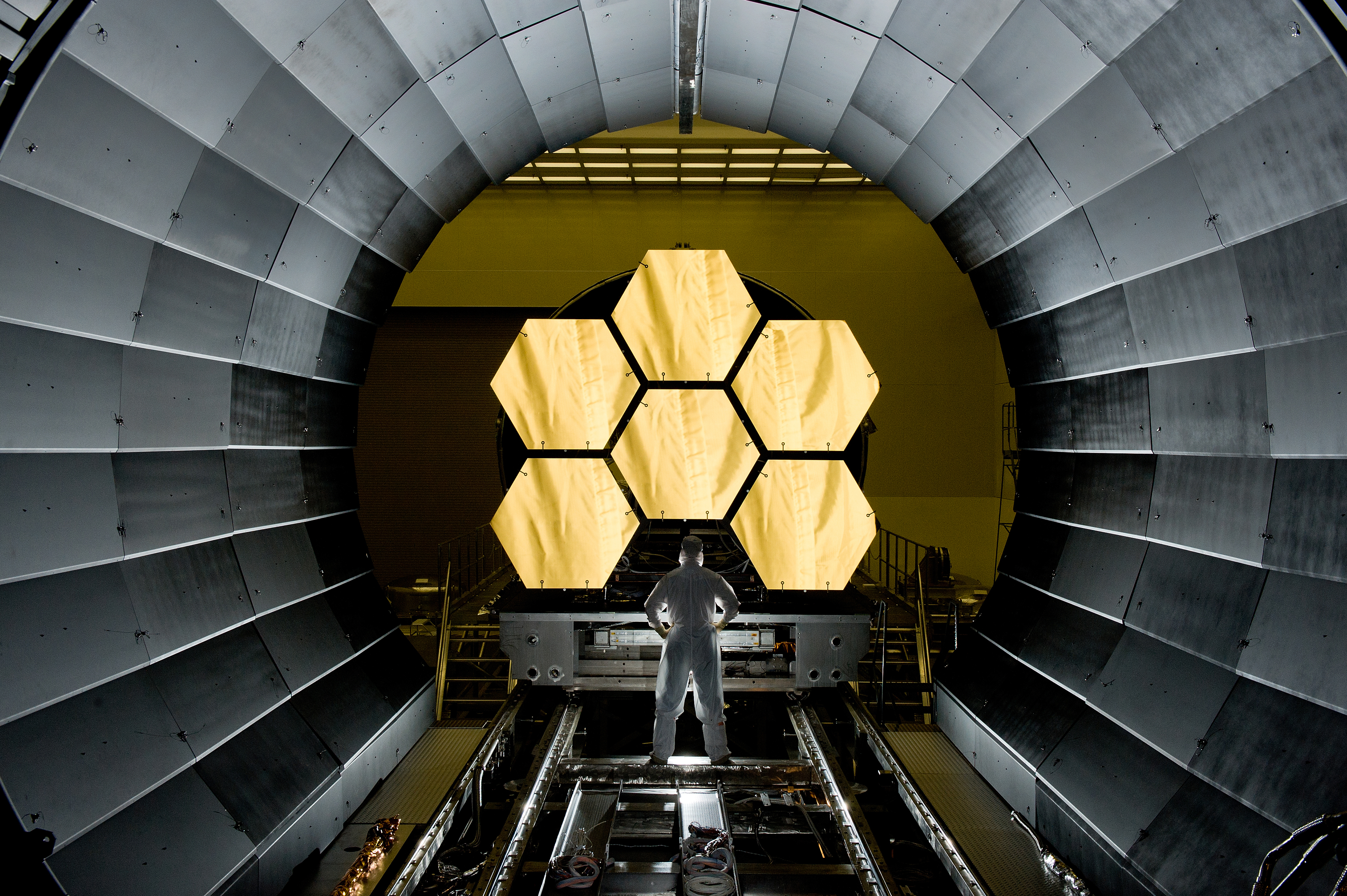Primary Mirror on:
[Wikipedia]
[Google]
[Amazon]
 A primary mirror (or primary) is the principal light-gathering surface (the objective) of a
A primary mirror (or primary) is the principal light-gathering surface (the objective) of a
 A primary mirror (or primary) is the principal light-gathering surface (the objective) of a
A primary mirror (or primary) is the principal light-gathering surface (the objective) of a reflecting telescope
A reflecting telescope (also called a reflector) is a telescope that uses a single or a combination of curved mirrors that reflect light and form an image. The reflecting telescope was invented in the 17th century by Isaac Newton as an alternati ...
.
Description
The primary mirror of a reflecting telescope is a spherical, parabolic, or hyperbolic shaped disks of polished reflective metal ( speculum metal up to the mid 19th century), or in later telescopes, glass or other material coated with a reflective layer. One of the first known reflecting telescopes, Newton's reflector of 1668, used a 3.3 cm polished metal primary mirror. The next major change was to use silver on glass rather than metal, in the 19th century such was with the Crossley reflector. This was changed to vacuum deposited aluminum on glass, used on the 200-inch Hale telescope. Solid primary mirrors have to sustain their own weight and not deform under gravity, which limits the maximum size for a single piece primary mirror. Segmented mirror configurations are used to get around the size limitation on single primary mirrors. For example, the Giant Magellan Telescope will have seven 8.4 meter primary mirrors, with the resolving power equivalent to a optical aperture.Superlative primary mirrors
The largest optical telescope in the world as of 2009 to use a non-segmented single-mirror as its primary mirror is the Subaru telescope of the National Astronomical Observatory of Japan, located in Mauna Kea Observatory onHawaii
Hawaii ( ; ) is an island U.S. state, state of the United States, in the Pacific Ocean about southwest of the U.S. mainland. One of the two Non-contiguous United States, non-contiguous U.S. states (along with Alaska), it is the only sta ...
since 1997; however, this is not the largest diameter single mirror in a telescope, the U.S./German/Italian Large Binocular Telescope has two mirrors (which can be used together for interferometric mode). Both of these are smaller than the 10 m segmented primary mirrors on the dual Keck telescope. The Hubble Space Telescope
The Hubble Space Telescope (HST or Hubble) is a space telescope that was launched into low Earth orbit in 1990 and remains in operation. It was not the Orbiting Solar Observatory, first space telescope, but it is one of the largest and most ...
has a primary mirror.
Radio and submillimeter telescopes use much larger dishes or antennae, which do not have to be made as precisely as the mirrors used in optical telescopes. The Arecibo Telescope used a 305 m dish, which was the world largest single-dish radio telescope fixed to the ground. The Green Bank Telescope has the world's largest steerable single radio dish with 100 m in diameter. There are larger radio arrays, composed of multiple dishes which have better image resolution
Image resolution is the level of detail of an image. The term applies to digital images, film images, and other types of images. "Higher resolution" means more image detail.
Image resolution can be measured in various ways. Resolution quantifies ...
but less sensitivity.
See also
* Active optics * Honeycomb mirror * Liquid-mirror telescope * List of largest optical reflecting telescopes * List of telescope parts and construction * Mirror mount * Mirror support cell * Secondary mirror * SilveringReferences
{{reflist Optical telescope components Mirrors